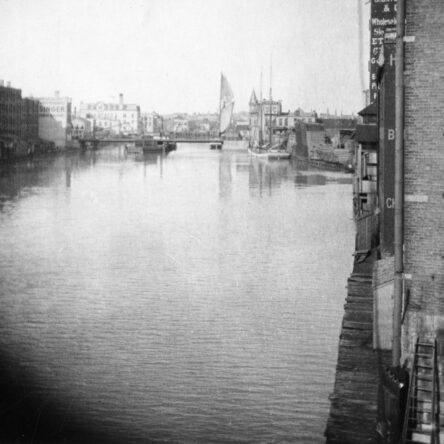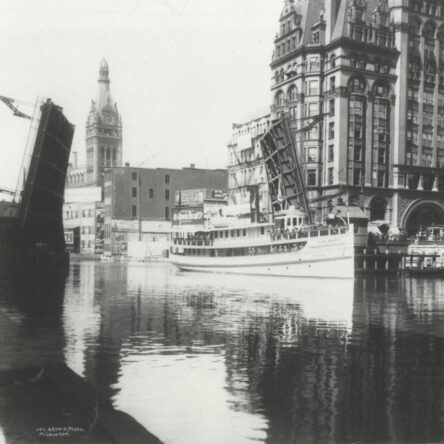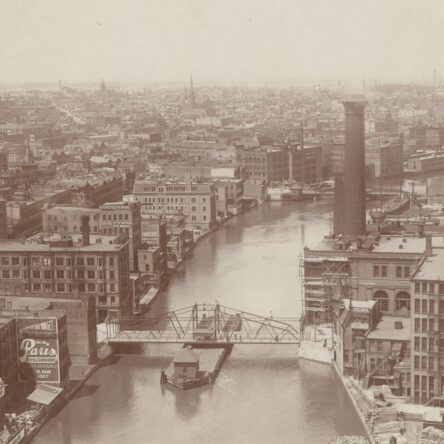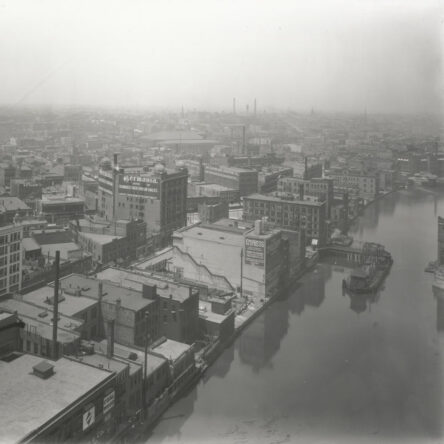Wells St. Bridge from Milwaukee Riverwalk
Looking North from Wisconsin Ave. Bridge
The Milwaukee River, for thousands of years, has been witness to the development and transformation of the communities that have made their home here. As a means of transportation, the river supported a myriad of American Indian villages and fur trading operations until the mid-nineteenth century.
As Milwaukee grew in the latter half of the nineteenth century, so did commerce along the Milwaukee River. Grain elevators, warehouses, tanneries, foundries, and shipping docks eventually covered the river’s edge, replacing the forests, marshlands, and bluffs that had dominated the space in the earlier period. By 1890, Milwaukee had fully transformed from a burgeoning settlement into an industrial powerhouse, and the Milwaukee River was at the heart of it.
Standing on The Wisconsin Avenue bridge in 1890, one could see evidence of the city’s transformation all around. The bridge itself was a product of two eras of Milwaukee history. Its orientation, slanted across the river to join two offset streets, was determined by the contentious cross-river settlements of the 1840s. Its physical structure, an imposing piece of elegant iron ore completed in 1882, was reflective of Milwaukee’s meteoric rise as an industrial metropolis.
The view looking north from the east end of the bridge offered a snapshot of the gears that moved an industrial city. Brewing, the industry that made Milwaukee famous, was at its peak in 1890. The structure on the right side of this photo would become the site of Milwaukee’s first skyscraper, the Pabst Building, in 1892. Only 67 years earlier, the site had been home to a remote fur trading post built by Solomon Juneau. Further down the east side of the river, piles of lumber cut from inland forests sat at the foot of Mason Street, waiting to be transported to markets across the country and beyond. The sailing vessels that would transport them there can be seen both docked and in transit down the river. Cargo traffic on the river in 1890 was plentiful, and moveable bridges like the Wells Street swing bridge, seen in the distance of this photo, were necessary for facilitating both cross river and down river traffic in Milwaukee’s busy downtown.





